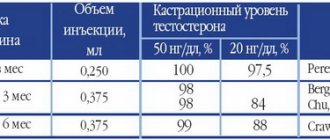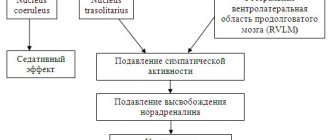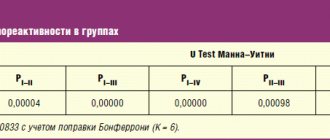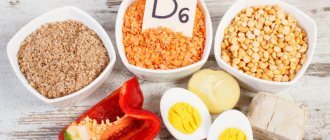Sometimes there is a single diverticulum, but, as a rule, most often people have multiple bulges in one part of the intestine.
Diverticula are divided into “true” and “false”, as well as “congenital” and “acquired”.
- True diverticula are most often congenital - due to a direct violation of the structure of the intestine. One of the features of a true diverticulum is that the walls of the diverticulum have all the layers characteristic of the intestine. True diverticula, for example, include Meckel's diverticulum: a protrusion of the wall of the small intestine at the junction of the patent embryonic vitelline duct as a developmental anomaly.
- False diverticula are acquired and represent a bulging of the intestinal mucosa outward through thinned places in its muscle layer.
As a rule, acquired diverticula are multiple and rarely occur in single quantities. Diverticulosis is a change in the intestinal wall with the presence of multiple diverticula in it without inflammatory processes occurring in them and not manifesting themselves clinically. If an inflammatory process develops in the diverticulum, they speak of diverticulitis and, as a consequence, the development of diverticular disease.
Incidence of diverticular disease
Of all the diseases of the colon, intestinal diverticula are one of the most common in the modern world. The incidence of diverticular disease averages 20% in European countries; moreover, in older age groups of the population (60–80 years), the incidence increases, reaching 40–50%, and among patients over 80 years of age, the incidence reaches 60–65%. In our country, diverticula of the large intestine are found in approximately 17-28% of gastroenterological patients. The incidence of the disease in men and women is approximately the same.
Classification of diverticular disease
- Uncomplicated.
This form is detected accidentally during an X-ray or endoscopic examination of the intestine. Blood tests usually show no changes. The examination must be carried out to assess the extent of intestinal damage, prognosis of the course of the disease and the choice of a method for preventing complications or treatment. - Complicated
, occurring with an acute inflammatory process (diverticulitis, diverticular infiltrate, diverticulum perforation, abscess, peritonitis), a chronic inflammatory process, as well as bleeding. A chronic process includes situations when inflammation cannot be eliminated within 6 weeks, or it occurs again. In severe cases, an infiltrate, narrowing of the intestine, or a fistula from a destroyed diverticulum may form.
Causes of diverticula
The occurrence of this disease does not have any specific cause. It is caused by a combination of many factors. There is an opinion that some people are predisposed to this disease due to congenital underdevelopment of the muscular layer of the intestinal wall. As a result, diverticula form with age or under the influence of any factors.
Congenital predisposition plays a role in people with hereditary syndromes of connective tissue dysplasia (Marfan syndrome, Ehlers-Danlos syndrome, when there is a deficiency of collagen in the human body), and a combination of diverticular disease of the colon with diseases associated with a decrease in the elasticity and strength of connective tissue (hernias) is also often found , varicose veins, visceroptosis, polycystic disease). However, congenital tissue deficiency is not the only cause of pathological changes in the intestinal wall.
The high incidence of diverticular disease in older people is associated with a gradual decrease in the tone of the colon wall as the body ages. Diverticular disease is a chronic disease that occurs due to the formation of a pouch-like protrusion (diverticulum) in the intestinal wall, and, as a consequence of the stagnant process, the development of inflammation in them. The muscle layer of the colon becomes thicker and less elastic. The supporting connective tissue loses elasticity and the intestinal wall becomes less extensible. Therefore, diverticula appear more often in older people than in younger people.
It is also known that diverticula occur significantly more often with a decrease in plant fibers and fiber in the diet. Therefore, diverticular disease occurs 3 times less often in vegetarians than in people who limit their intake of vegetables and fruits. Foods low in fiber do not stimulate intestinal motility well, the movement of contents through the colon slows down, which increases water absorption and, as a result, constipation develops. Retention of feces in the intestine, combined with disruption of the normal intestinal microflora, leads to inflammation and progression of diverticular disease. This can also explain the more frequent appearance of diverticula in the sigmoid colon (constipation plays the role of a resolving factor).
The clinical picture in approximately two out of three cases is not accompanied by any complaints (asymptomatic diverticulosis); the pathology is discovered by chance during endoscopic or x-ray examinations. Most often, the first signs of diverticular disease are pain and functional impairment in the form of constipation or diarrhea. There are complaints of regularly recurring pain in the abdomen, often in the left iliac region or lower sections, which disappear after defecation. Pain of varying intensity can exist for a long time - from several weeks to months. Increased pain is sometimes accompanied by an increase in temperature, and signs of intoxication may appear (dry mouth, nausea, tachycardia). Also often noted is bloating and excessive gases, various dyspeptic disorders, which are sometimes hidden under the guise of irritable bowel syndrome.
Risk factors
Before you learn how to treat diverticulitis, it is worth addressing the risk factors. In this case, these include the already mentioned heredity, age, as well as poor nutrition and lifestyle, which contribute to impaired peristalsis. For example, people who sit a lot, hardly move, and have weak muscles are at risk. Many people hardly associate sports and peristalsis, but developed abdominal muscles really help the intestines to function properly. But you can’t get too carried away with heavy sports - otherwise there will be a backlash.
We also include anyone who does not follow the drinking regime into the risk zone - without a sufficient amount of moisture, the contents of the intestine become too dense, which can cause damage to its walls. Those who abuse bad habits, do not follow basic hygiene rules and do not take good care of their health are also in danger.
Complications of diverticular disease of the colon
- Diverticulitis.
This is an acute inflammation that occurs in the diverticula in a quarter of patients with diverticulosis. Signs of the development of inflammation may include the appearance of pain and muscle tension in the anterior abdominal wall, increased body temperature, chills, bloating, and bowel problems such as diarrhea or constipation.
- Diverticulum perforation.
Against the background of the inflammatory process in the diverticulum, part of its wall may collapse, and the contents of the intestine enter the abdominal cavity. In this case, local or diffuse peritonitis develops. When perforation (rupture of the wall) of the diverticulum into the retroperitoneal tissue or the space between the layers of the mesentery, infiltrates or abscesses appear.
- Bleeding.
Occurs in approximately 25% of patients with diverticular disease. For many people, it may be the first and only manifestation of the disease. Typically, bleeding is associated with ulceration of the diverticulum wall as a result of chronic inflammation. Also, at the site of the fecal stone, a bedsore may form with damage to the blood vessel. The intensity of bleeding can vary: from a slight admixture of blood in the stool (sometimes there is hidden bleeding, which is manifested by a gradual increase in anemia), to massive profuse bleeding, accompanied by collapse and even leading to death.
- Intestinal obstruction.
The cause of intestinal obstruction can be an inflammatory process around the diverticulum or an adhesive process, leading to deformation of the intestine and disruption of the movement of feces through it. In rare cases, intussusception (rolling in) of part of the intestine with a diverticulum or spasm of smooth muscles may occur.
- Intestinal fistulas.
They can occur when a diverticulum is perforated and an abscess breaks through into a nearby organ (the so-called “internal fistulas”). Men more often develop fistulas with the bladder, and women with the vagina. When an intestinal-vesical fistula forms, air or an admixture of feces may appear in the urine.
Symptoms and signs
Diverticulitis is characterized by many symptoms, but the problem is that very often they are similar to the symptoms of other diseases: for example, problems with the kidneys or female genital organs. But a person should still be alert to the following signs of the disease:
- pain in the lower abdomen. Usually it is point-like, it bothers only in a specific place - and it can hurt for several days, then fading, then starting again. The sensation intensifies with sudden muscle contractions: during laughter, coughing, physical activity;
- increased pain after bowel movements, during pressure;
- bowel disorders - intestinal diverticulitis manifests itself as both constipation and diarrhea;
- the presence of blood in the stool - usually the bleeding is not very abundant and is observed only in a tenth of patients;
- fever, chills. When it comes to diverticulitis, symptoms of this nature are rare, but they are also possible;
- loss of appetite - the patient does not feel like eating;
- nausea, vomiting, general weakness of the body - these signs of diverticulitis are very similar to the symptoms of poisoning.
If a patient has intestinal diverticulitis, the symptoms, although misleading, are still quite pronounced and bright, and therefore require immediate consultation with a doctor for a thorough examination.
Another important clarification about diverticulitis: the symptoms in women and men will be similar, although in the latter this disease is less common. In this case, we are talking only about the prevalence of the disease, but not about the fact that it manifests itself in different ways. The only peculiarity is that women can confuse this disease with “female-style” ailments, but there are nuances here, because there will still be some signs similar to poisoning.
Are you experiencing symptoms of diverticulitis?
Only a doctor can accurately diagnose the disease. Don't delay your consultation - call
Diagnosis of diverticular disease
- Irrigoscopy
is an X-ray examination in which the lumen of the colon is filled with a contrast suspension and its condition is assessed during filling and after bowel movement. - Colonoscopy
can detect the presence of multiple diverticula, signs of inflammation or intestinal bleeding, and may also be useful in detecting associated lesions such as polyps and cancer. - MSCT
(multispiral computed tomography). Suitable for differential diagnosis of diverticulitis and tumor lesions of the colon.
Diet
Since diverticular disease occurs much more often in people who limit their intake of vegetables and fruits, all patients with diverticulosis need to use foods high in plant fiber and pectin. Wheat bran (especially coarse bran) is very useful, which significantly reduces the pressure inside the intestine and accelerates the rate of movement of contents through the intestines.
It is imperative to exclude all foods that cause increased gas formation (legumes, lentils, grapes, sauerkraut, butter and yeast dough, onions) and constipation (blueberries, rice). It is also advisable to exclude seeds, fruits with a large number of grains and excessively coarse fiber (persimmons, pineapples, turnips, radishes, radishes).
Drug treatment
- In uncomplicated cases, the disease does not require the use of medications. The need to take medications depends on the clinical manifestations.
- For abdominal pain, antispasmodics are used.
- If dysbiosis is detected, drugs are used that help restore normal intestinal microflora.
- For persistent constipation, take medications to enhance gastric and intestinal motility: lactulose preparations, petroleum jelly or olive oil orally or in microenemas.
- For diverticulosis with clinical manifestations of inflammation, it is necessary to use the entire range of therapeutic measures: a laxative diet, antispasmodics; drugs that regulate intestinal motor function, and agents that normalize the composition of the intestinal bacterial flora.
Folk remedies
The following folk remedies are recommended to help normalize stools and restore intestinal function:
- Carrot seed powder (to do this, you need to thoroughly grind the carrot seeds and consume this powder several times a day (2-3), with a sufficient amount of water - 200-300 ml).
- Sauerkraut brine or radish juice (drink a few tablespoons after meals, 1-2 times a day).
- Infusion of aloe leaves (approximately 150 g of crushed leaves, pour 300 g of honey, leave the resulting mixture for 24 hours, strain and take a tablespoon an hour before meals).
- Flaxseed oil 1 tablespoon on an empty stomach daily.
- Mint tea (add 2-3 mint leaves to regular tea).
Surgery
The need for surgical treatment for diverticular disease can arise both urgently and routinely. This happens when complications occur that can threaten a person’s life (bleeding, perforation, peritonitis). Planned surgical treatment is always aimed at eliminating the threat of such complications. The choice of surgical method in each specific case depends on the extent of the process, inflammatory changes in the diverticula, the condition of the intestinal wall and surrounding tissues, the presence of inflammation outside the intestinal lumen or peritonitis. It is important to consider comorbidities that are often observed in older people. As a rule, resection (removal) of the affected part of the colon is performed in a planned manner with simultaneous anastomosis. Surgical treatment in our Clinic is performed laparoscopically, which allows patients to quickly return to active life. Planned surgery is always performed during the period of remission, 2-3 months after the acute attack of the disease has passed. Fistulas of the colon are an indication for planned surgical treatment, since it is not possible to achieve their independent healing, and chronic inflammation leads to the development of rough scars that impair the movement of intestinal contents, as well as to the development of chronic intoxication and decreased immunity. When intestinal-vesical fistulas form, there is a threat of developing an ascending urinary tract infection and kidney damage.
- Surgical removal of fistulas
is a complex surgical intervention requiring the participation of highly qualified specialists. In our clinic, when planning such interventions, related specialists (urologists, gynecologists, endoscopists) are involved as necessary. For intestinal bleeding, conservative treatment (hemostatic therapy) or endoscopic bleeding control is most often prescribed. The operation is performed only if conservative treatment methods are ineffective. - Surgical treatment for diverticulum perforation.
If surgery is performed for urgent reasons, a colostomy may be performed to reduce the risk of postoperative complications. Reconstructive surgery with closure of the colostomy and restoration of intestinal continuity is performed after the inflammatory process has subsided (after approximately 3 months).
How to make an appointment with a gastroenterologist
You can make an appointment with a gastroenterologist at Meditsina JSC (academician Roitberg’s clinic) on the website - the interactive form allows you to select a doctor by specialization or search for an employee of any department by name and surname. Each doctor’s schedule contains information about visiting days and hours available for patient visits.
Clinic administrators are ready to accept requests for an appointment or call a doctor at home by calling +7 (495) 775-73-60.
Convenient location on the territory of the central administrative district of Moscow (CAO) - 2nd Tverskoy-Yamskaya lane, building 10 - allows you to quickly reach the clinic from the Mayakovskaya, Novoslobodskaya, Tverskaya, Chekhovskaya and Belorusskaya metro stations .
Forecast
The prognosis is usually favorable if the disease is detected in a timely manner and the necessary preventive and therapeutic measures are started, provided that the patient follows all the necessary recommendations. However, if the need for prevention is ignored, diverticular disease can lead to the development of severe complications that threaten the life and health of the patient. Moreover, the disease is more common among older people who have a variety of concomitant diseases and lower body resistance.
Prevention
Among preventive measures, a varied and balanced diet is of primary importance. Due to the fact that a diet low in plant fiber predisposes to the formation of diverticula, in order to reduce the risk of developing the disease, it is necessary to include large quantities of plant-based products. Since timely detection of diverticula plays an important role, it is extremely important to undergo preventive examination and regularly perform endoscopic examination of the intestine.
X-ray contrast examination of the intestines
Irrigoscopy or X-ray contrast examination of the intestine allows you to take an X-ray and see the outline of the large intestine. It is carried out in equipped diagnostic rooms. In order to see the outlines of the internal organs, the patient is injected with a contrast liquid. We are talking about a solution of barium sulfate. As a rule, the contrast agent is administered through an enema or by ingestion.
The endoscopist takes pictures in a lying and standing position to observe the functioning of the internal organs in different situations.








